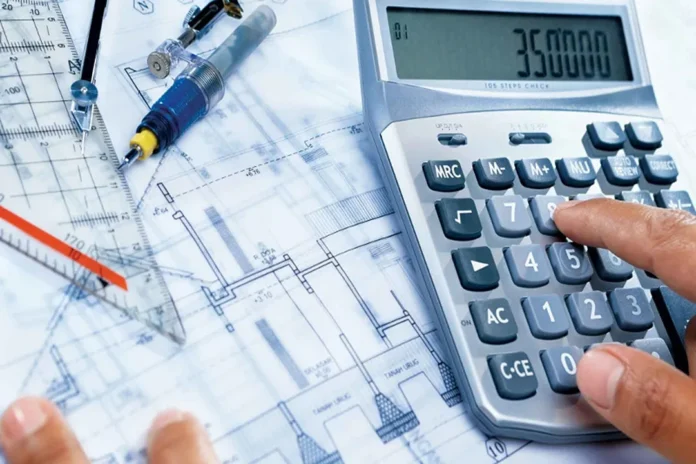Today’s construction landscape is far from stagnant. No longer confined to hammers, nails, and blueprints, the modern home builder now has a plethora of technological advancements at their fingertips. Software has woven itself into the fabric of construction, drastically altering the way we envision, plan, and execute projects.
Let’s venture into the fascinating realm of technology in construction and explore the profound impacts these tools are having on the industry.
Benefits of Using Software in Construction

The 21st century has brought a digital renaissance to the construction arena. These software advancements provide multiple advantages, from time savings to improved accuracy. In an era where efficiency is paramount, harnessing the power of technology translates into faster project completions, reduced labor costs, and minimization of errors. A builder who ignores these benefits risks falling behind in an ever-evolving market.
Meanwhile, embracing these technological solutions like homebuilding software fosters enhanced client satisfaction. Homeowners increasingly desire transparency in construction projects. With digital tools, builders can offer real-time updates, detailed visualizations, and an open channel of communication, ensuring the client feels involved and informed throughout the project’s lifespan.
Project Planning and Management Tools
The foundation of any successful construction optimization project lies in meticulous planning and astute management. Modern project management tools allow builders to seamlessly track progress, allocate resources, and mitigate risks, thus enhancing construction optimization efforts. These platforms offer a bird’s-eye view of a project, ensuring that every phase aligns with the initial vision and set timelines, contributing to overall construction optimization. With these tools, gone are the days of thumbing through heaps of paper to find a single document.
The software also plays a pivotal role in team coordination within the context of construction optimization. Assigning tasks, setting deadlines, and ensuring that everyone is on the same page becomes infinitely easier. It facilitates smoother workflows, reduces redundancy, and ensures that every member of the construction team is marching to the same beat, all of which are critical components of construction optimization.
Design and Modeling Software
No longer confined to flat blueprints, today’s architects and builders utilize design software to bring their visions to life. These 3D models provide a dynamic view of the final product, allowing both the builder and the client to explore the space virtually. It’s a game-changer, ensuring that the final construction aligns closely with the client’s expectations and minimizing post-construction modifications.
On the other hand, augmented and virtual reality integrations take this a step further. Clients can ‘walk’ through their future homes, making real-time changes to elements like wall colors or fixtures. For builders, this means feedback is instant and modifications can be implemented before the ground is even broken, ensuring a smoother construction process.
Construction Estimation and Cost Management

Traditional estimation methods were often plagued by inaccuracies, leading to budget overruns. Enter the digital era, where software ensures precise estimations by calculating material quantities, labor costs, and other variables with unparalleled accuracy. This precision safeguards against unexpected expenses, ensuring the project stays within budgetary constraints.
Cost management tools are equally transformative. By continuously monitoring expenses and comparing them to initial estimates, builders can make necessary adjustments on the fly. This proactive approach ensures financial discipline and avoids the pitfalls of unforeseen costs that can derail a project.
Materials Procurement and Inventory Management
Sourcing materials is an art, and today’s software tools are the painter’s brush. With a few clicks, builders can compare prices, check material availability, and place orders. This streamlined approach reduces wait times and ensures projects remain on schedule.
Inventory management solutions complement this by tracking every nail, tile, and beam. Misplaced or wasted materials are a thing of the past. By maintaining an accurate inventory, builders can optimize usage, reduce waste, and save both time and money.
Quality Control and Inspection Software
Consistency is the hallmark of great construction. Digital tools now enable builders to ensure that every element of a project meets set quality standards. These platforms can generate checklists, monitor adherence, and offer immediate feedback if discrepancies arise.
The second layer is inspection software, which facilitates a thorough examination of the construction work. Be it checking structural integrity or ensuring aesthetic perfection, these digital eyes miss nothing. For builders, this means fewer callbacks and a reputation for delivering flawless projects.
Safety and Compliance Solutions

Safety cannot be compromised. Digital solutions, embedded with the latest guidelines and regulations, ensure that every aspect of a construction site adheres to stringent safety norms. By flagging potential hazards, these tools act as an ever-vigilant guardian, ensuring worker safety.
Compliance is equally crucial. With constantly evolving regulations, staying updated can be a Herculean task. Modern software shoulders this burden, ensuring projects align with the latest codes and standards, thereby averting legal hassles.
Communication and Collaboration Platforms
In today’s globalized world, construction teams often span continents. Unified communication platforms bridge these geographical gaps. From real-time chat to video conferencing, these tools foster collaboration, ensuring everyone remains on the same wavelength.
These platforms transcend mere communication. They integrate document sharing, annotations, and collaborative design alterations, making it easy for team members to share insights, provide feedback, and work cohesively, regardless of their physical location.
Construction Automation and Robotics
The dawn of construction robots is upon us. From bricklaying bots to automated cranes, the construction site of the future will be a blend of man and machine. These innovations promise faster construction times, reduced manual labor, and impeccable precision.
While the idea of robots might conjure images of science fiction, their integration is very much a reality. By handling repetitive tasks or operating in hazardous conditions, these mechanical marvels enhance productivity and ensure human workers can focus on more intricate aspects of construction.
Data Analytics and Business Intelligence

The construction world is awash with data. From material quantities to worker hours, the numbers are staggering. Data analytics tools help decipher this numerical maze, offering actionable insights that can shape future projects.
Business intelligence goes hand in hand with this. By analyzing past projects, market trends, and customer feedback, these tools offer a roadmap for future success. For a builder, this means better decision-making, optimized processes, and a stronger competitive edge.
Final Thoughts
The construction industry, traditionally viewed as resistant to change, is experiencing a digital metamorphosis. Software and technology are not just augmenting existing processes; they are rewriting the rules. Builders who embrace these innovations stand to gain not just in efficiency and quality, but in reputation and client satisfaction. The blueprint for future construction is clear – it’s digital, dynamic, and dazzlingly efficient.








